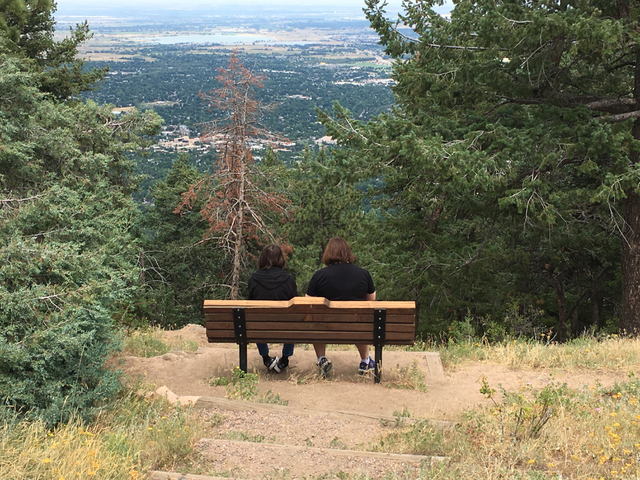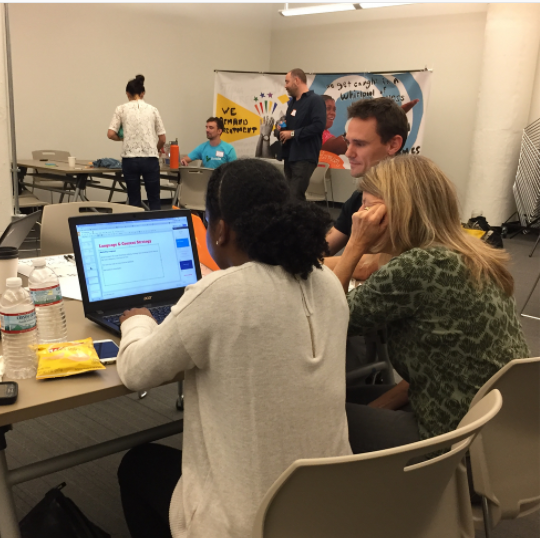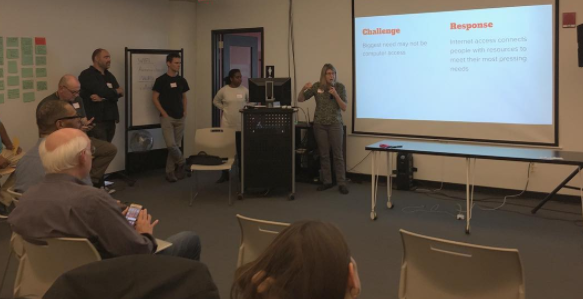
So, 2017.
It’s been a weird year.
I started the year with a job with a director of UX title, benefits, and a growing flood of stress. I end the year freelancing, without benefits, and a lot less stressed.
In fact, it could be argued that I’m “happy”… tho I wouldn’t go that far.
Here’s what happened along the way:
I went indie.
I finally went to IA Summit after years of never making it, but I spent all four days stressed to the point of not wanting to be near anyone. The job I was in was mashing all the buttons that make me a martyriffic stressbot about design. People were asking me how I was doing and I’d talk about 70 hour work weeks.
That was a sign something was off — a director of UX shouldn’t be putting in 70 hours a week for such a small launch project (and it was small despite it being a company just trying to get going). And a director shouldn’t be this panicked when the teams he was directing were on delivering on-time. I was showing the signs of burnout.
A few weeks later, I walked away. I wasn’t the right person to deliver what they wanted to deliver, not the right person to do it with the culture they were trying to create (which, personally, I felt wouldn’t deliver anything of substance while burning their employees out), and therefore, I couldn’t help them achieve what they needed to achieve. I walked, to the total surprise of the leadership.
I walked without another job. After a month of self-imposed “do nothing” (which was HARD, I tell ya), I went indie and launched Hêtre.
The new business has been a struggle. I was ready for the grind, but I wasn’t ready for fallow times. I’ve learning sales, diversification, and promotion all on the fly, so it’s been a steep learning curve.
All that said, I’m happy I left. When you are predisposed to care too much for work and your vocation, you are susceptible to an unhealthy relationship with your work. By stepping consulting role I finally found the disconnection I needed from the seduction. My central worry is keeping my company going, not borrowing the trouble of my employer as if I owned those problems.
I got back on stage.
I gave two conference talks in the same year for the first time since 2010, and I was on stage after taking 2016 off from public speaking.
One thing I hear a lot from the boo-birds of UX is “people who speak at conferences are usually the ones not doing the work.” And there are some people who are frequently on the speaking circuit whom I can’t identify any actual work they’ve done. But, I bought too much into the polarity of the statement.
The more I’ve talked to the people on the UX speaking circuit, the more I’ve found people who actually do the work of design — far more than the naysayers say they do. I think the difference is speakers shift away from the nuts and bolts of design and towards communicating design. And a lot of the reason for it is sales.
When I was launching Hêtre I interviewed half a dozen people in the indie design world. All of them said the foundational gigs they built their companies on came from people who heard them speak. Now, almost everyone I talked to was someone who I’d known from speaking or writing (so definitely some bias there), but it did remind me that to be successful I had to be known. Speaking and writing are two ways to get myself out there.
So, I’m looking for speaking gigs in 2018. I’m also slowly, slowly writing a book on UX careers. I’m doing it because I have things to share.
I don’t want to listen to the kids in the back row throwing spitwads anymore. I have too much to do to be distracted by them.
I wrote, and people read what I wrote.
Christina Wodtke threw out a request for “advice to new designers.” I put something together in 2 hours of writing and editing time.
And then it went viral. Something I didn’t expect. But then, who expects going viral? It got quoted, shared, criticized from the CanUX mainstage by Dan Klyn, and just kept going around the world.
Anne and I have been trying to get The Interconnected spun up over the last year, which has struggled to find a solid audience amid the great cloud of noise that is the design community. Sometimes it feels like writing into the void, talking to yourself and hoping that maybe someone will answer. This year, I feel like the void finally answered back, if only in a small way.
My favorite three things I wrote this year:
The True Tragedy Of The Commons
Telling Your Story
In Defense of Design Sprints
I dealt with the consequences of a broken society.
The #metoo age hit close to home one November afternoon. Julia, the strange Jewish girl that sat behind me in most my high school classes, was in paragraph 1 of a New York Times story where she accused Louis CK of whipping out his dick and then sabotaging her career.
Between #metoo and Black Lives Matter, I’ve felt driven to learn how to listen better, remember my own privilege and blinders, and remember to center on the victims. For a cishet white guy from Middle America, it’s been a painful transition, but I’m also mindful of the need for people like me to shut up and listen and amplify voices.
I’ve also learned, the hard way, that the abused are often the biggest defenders of the abusers. In the case of one set of accusations towards someone in the community, I had someone insisting, repeatedly, that the accused couldn’t be the problem, even as I kept inadvertently stumbling into people who’d been abused by the accuser. It was a bit of a shock to me, but knowing that now I’ve become mindful of how abuse affects people so I can have more empathy for them.
Meanwhile, I have members of my own family spouting alt-right and white supremacist memes and ideas. The work we have before us to create a truly just and equitable society is daunting, especially with current American administration presenting themselves as white supremacists. But still, I keep trying, keep making mistakes, keep apologizing, and keep going. I feel in debt to the women and people of color whose voices I’ve tried to amplify. I don’t want to be a hero. I just want to build a world based on empathy instead of supremacy.
I learned to be optimistic.
I’m never going to be happy. This is true. I’m just Eeyore with a tail pinned to my ass.
But I’m learning to be optimistic.
This summer I consulted with a company and their burned out design team who had lost their spark. One thing I told them, over and over, was that UX must carry the optimism of an organization. Things suck, but we hold out hope for better — in fact, we design the better. We’re the light in the dark, the ones who show not just how people interact with what we build, but also how we can make things better for those people.
I’ve gotten tired of hearing people insist on positivity and smiling. Seriously, smiling all the time doesn’t do crap. One of the worst designers I’ve ever worked with was eternally smiling. But the best designers I know are people who are biased to optimism, even when they’re frowning. They want “better,” not just “happy.”
Starting my own company has really pushed me on optimism. I’ve had deals go south, leads go cold, fallow times. But, I stay determined to make this work. And that’s what optimism is for me now — the determination to demand “better” and the ability to communicate that “better” so that everyone can latch onto it.
So that was my 2017. What does my 2018 look like? Well:
1. Get the business to where I can stop worrying about finding another job
2. Make myself more available through writing, speaking, and mentoring
3. Restore my 30 minutes a day of reading time
4. Lose weight, exercise, yadda yadda
5. Plant more “seeds in a garden you never get to see”
6. And yeah, finish the damn book already.
A bit of an arduous list, but all doable in their own way.
The song that’s been closest to me lyrically in 2017 was Sylvan Esso’s “Slack Jaw”:
It’s not like I got hurt or broken
Or ruined on the way
It’s an ache and it shines through me
A swallow in a cageOh, slack jawed me
Can’t you see?
There’s so many rhythms and harmonies
And I’m walking the dog back
2017 left me feeling astonished and overwhelmed at where I am, and for all the people who’ve helped get here (and whom I’ve helped in return).
Here’s to more of that in 2018.
(I’m always ready to talk about your UX strategy and design needs! Contact me.)





